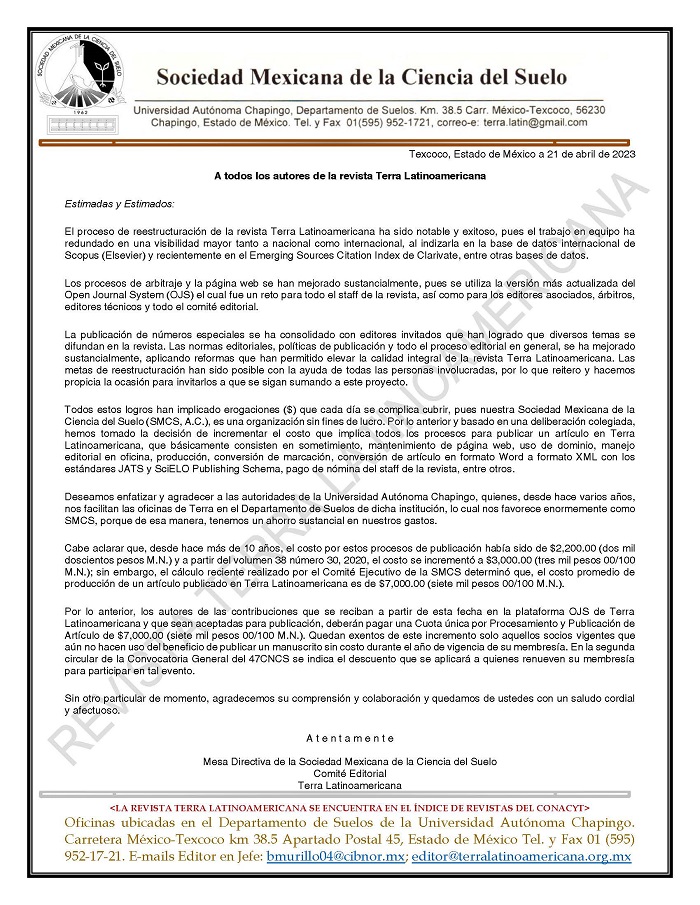Nutrients From the Dry Biomass of Three Green Manures Grown in a Ferric Luvisol from Campeche, Mexico
DOI:
https://doi.org/10.28940/terra.v42i.2030Keywords:
fertility and fertilization, legumes, cornfields, Yucatan peninsula, tropical soilsAbstract
Green manures (GM) are an alternative to conventional fertilization based on the use of industrial synthesis fertilizers, which, due to their excessive and inef ficient use, have contaminated the environment and aggravated soil erosion and degradation, which is why The main objective of this work was to determine the content of nutrients present in the aerial biomass of legumes used as green manures, both inoculated and not inoculated with endomycorrhizas and beneficial nitrogen-fixing bacteria established in a ferric Luvisol soil, for this the nutrient content present in the dry biomass of three legumes used as green fertilizers; Mucuna pruriens (L.) DC. (MU), Vigna unguiculata L. (XPE), and Phaseolus lunatus L. (IB), Mucuna pruriens inoculated with endomycorrhizae (EM) and beneficial nitrogen-fixing bacteria (BFN) (MU+R), V. unguiculata inoculated with EM and BFN (XPE+R), P. lunatus inoculated with EM and BFN (IB+R). The M. pruriens, inoculated or not, presented a C/N ratio (18.33 and 21.73) close to the optimum for a green fertilizer, however, XPE+R is superior in the production of dry biomass (6.25 Mg ha-1), nitrogen (104.20 kg ha-1), phosphorus (15.73 kg ha-1) and potassium (127.33 kg ha-1). In addition to having commercial value in the regional market, it can be considered as a possible more appropriate fertilizer alternative, thus supporting the capacity of ancient Mayan technology, since V. unguiculata was part of the milpa system in Yucatán.
Downloads
Publication Facts
Reviewer profiles N/A
Author statements
- Academic society
- Terra Latinoamericana
- Publisher
- Mexican Society of Soil Science, C.A.

















